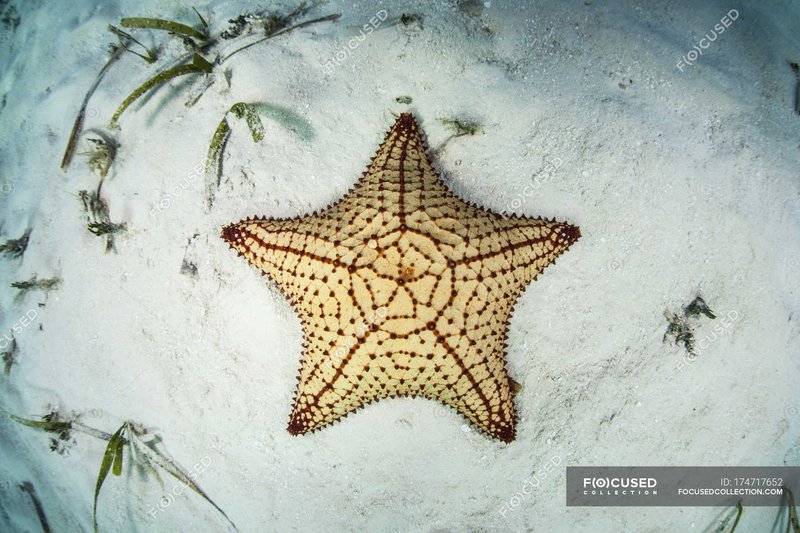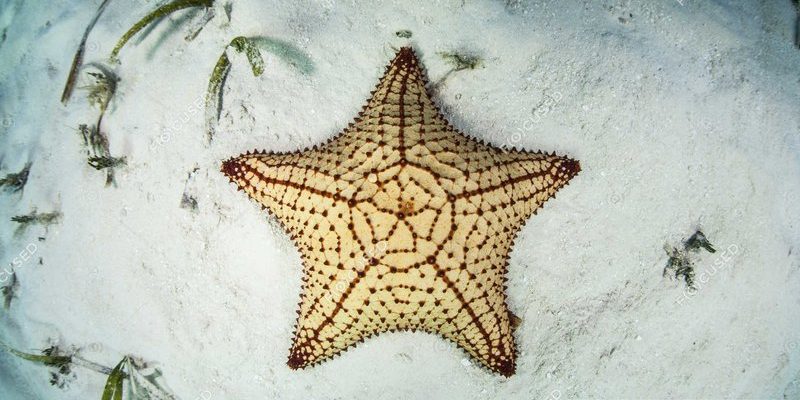
Have you ever marveled at the beauty of a starfish as it clings to a rock or gracefully glides across the ocean floor? The Indian Starfish, in particular, is a fascinating marine creature that captivates both divers and beachcombers alike. This vibrant species can often be found in the warm waters of the Indian Ocean, where it showcases a stunning array of colors and patterns. But there’s more to the Indian Starfish than just its eye-catching appearance. Understanding its behavior, habitat, and diet can give us deeper insights into the delicate ecosystems of our oceans.
What makes the Indian Starfish so intriguing? For starters, it isn’t your typical star-shaped creature. These echinoderms are equipped with fascinating adaptations that help them thrive in their environment. From their unique feeding habits to their incredible regenerative abilities, every aspect of their life is filled with surprises. In this article, we’ll explore various facets of the Indian Starfish, from its physical characteristics to its ecological role, leaving you with a newfound appreciation for this remarkable marine animal.
What is an Indian Starfish?
The Indian Starfish, known scientifically as Astropecten indicus, is a member of the Asteroidea class within the phylum Echinodermata. These creatures typically have five arms, although some may exhibit a few more due to natural variations. With their flattened bodies and tough skins, Indian Starfish are well-adapted to their rocky, sandy, or coral reef habitats. Their bodies are covered in tiny, bumpy structures called tubercles, which help provide protection against predators.
What’s truly captivating about the Indian Starfish is its color variability. You can find them in hues of bright orange, yellow, and sometimes even purple or blue! This not only serves a visual purpose but also helps these starfish camouflage among the corals and sandy seafloor, making it easier for them to escape from potential threats.
Another interesting fact about Indian Starfish is their unique water vascular system. This system allows them to transport water throughout their body, helping them move, feed, and breathe. It’s a complex but efficient way for these creatures to operate without a centralized brain. Instead, they function through a decentralized nerve net, allowing them to respond to their environment in an impressive manner.
Habitat and Distribution
Indian Starfish are primarily found in the warm waters of the Indian Ocean, particularly around the coastal regions of India, Sri Lanka, and the Maldives. They thrive in both shallow tidal pools and deeper waters, usually at depths of up to 25 meters. Their adaptability to various environments has allowed them to settle comfortably in sandy substrates, rocky shores, and coral reefs.
These starfish are particularly abundant in areas where food is plentiful, such as regions with a high density of mollusks and small crustaceans. They often seek shelter under rocks or coral formations during the day to avoid predators, such as fish and sea turtles. Their preference for bright, sunlit areas not only aids in their hunting but also allows them to utilize photosynthetic organisms for shelter, creating a symbiotic relationship within the marine ecosystem.
Interestingly, the habitat of the Indian Starfish also affects its behavior and feeding habits. In coral reef environments, they tend to be more active and adventurous, whereas those found in sandy or rocky habitats may display more cautious behavior. This adaptability plays a crucial role in their survival and helps maintain the balance of the ecosystem where they reside.
Diet and Feeding Habits
The Indian Starfish is primarily a carnivore, with a diet that consists mainly of bivalves such as clams and oysters, as well as small crustaceans. They employ a fascinating feeding technique that sets them apart from other marine animals. Instead of chewing, Indian Starfish have the ability to extend their stomachs out of their bodies, enveloping their prey to digest it externally. This method allows them to consume food that is larger than their mouths, making them highly efficient feeders.
During feeding, the Indian Starfish can often be seen clinging to its prey with its tube feet, which are powered by its water vascular system. These tube feet act almost like suction cups, offering a secure grip while the starfish draws its stomach into the shell of the bivalve. It may seem a bit gruesome, but this feeding strategy showcases the remarkable adaptations that allow the Indian Starfish to thrive in its environment.
While it primarily feeds on live prey, the Indian Starfish is also known to scavenge on dead marine animals. This behavior is essential for the ecosystem, as it helps break down organic material and recycle nutrients back into the environment. By both hunting and scavenging, these starfish contribute significantly to the health and balance of their marine habitats.
Reproduction and Lifespan
Indian Starfish have an intriguing approach to reproduction. They are capable of both sexual and asexual reproduction, which adds to their adaptability in various environments. In sexual reproduction, male and female starfish release sperm and eggs into the water, where fertilization occurs externally. This method often takes place during specific seasons when conditions are optimal for survival.
One of the most fascinating aspects of starfish reproduction is their ability to regenerate lost limbs. If an Indian Starfish loses an arm—whether due to injury or predation—it has the remarkable capability to regrow that arm over time. In some cases, even a severed arm can regenerate into a new starfish, given that it contains a part of the central disc. This regenerative ability not only enhances their survival rate but also allows them to thrive despite the challenges they might face.
As for lifespan, Indian Starfish typically live for about 5 to 10 years, although some may exceed this range under optimal conditions. Their longevity can be influenced by various factors, including habitat quality, food availability, and predation pressure. By understanding their reproductive strategies and lifespan, we gain insight into the ecological role these fascinating creatures play in the marine world.
Ecological Importance
The Indian Starfish plays a vital role in maintaining the health of marine ecosystems. They help control the populations of bivalves and other small marine animals, contributing to a balanced food web. By feeding on these organisms, they prevent overpopulation, which could lead to depletion of resources and destabilization of the ecosystem.
Furthermore, the Indian Starfish serves as prey for various marine animals, including larger fish and sea birds. This makes them an integral part of the food chain, linking smaller organisms to bigger predators. Through this relationship, they contribute to the overall biodiversity and health of their surroundings.
Interestingly, starfish are also indicators of environmental health. Researchers often study their populations and behaviors to assess the impacts of climate change, pollution, and habitat destruction. Monitoring the health of starfish populations can provide valuable information about the state of our oceans, signaling when actions need to be taken to protect these fragile ecosystems.
Conservation Status
While the Indian Starfish is not currently considered endangered, its populations are facing challenges due to human activities and environmental changes. Coastal development, pollution, and climate change are significant threats that can disrupt their habitats and food sources. Additionally, overfishing and destructive fishing practices may unintentionally harm starfish populations.
Conservation efforts aimed at protecting marine ecosystems play a crucial role in ensuring the survival of the Indian Starfish. Establishing marine protected areas, regulating fishing practices, and raising awareness about the importance of marine life are essential steps in safeguarding these beautiful creatures and their habitats.
Your actions can contribute to conservation efforts as well! Reducing plastic usage, participating in beach clean-ups, and supporting sustainable seafood options can make a significant difference in the health of our oceans. By advocating for the protection of marine life, we can help ensure that future generations can enjoy the wonders of the Indian Starfish.
Interesting Facts about Indian Starfish
| Scientific Name: | Astropecten indicus |
| Size: | Typically between 10–30 cm in diameter |
| Color: | Bright orange, yellow, purple, and blue |
| Habitat: | Indian Ocean, coastal regions of India, Sri Lanka, and the Maldives |
| Diet: | Bivalves, small crustaceans, and scavenged marine material |
| Lifespan: | 5 to 10 years |
FAQ
Where can I find Indian Starfish?
You can typically find Indian Starfish in the shallow waters of the Indian Ocean, especially around coastal areas in India, Sri Lanka, and the Maldives. They prefer habitats with sandy or rocky substrates and are often found near coral reefs or tidal pools where food is plentiful.
How do Indian Starfish reproduce?
Indian Starfish can reproduce both sexually and asexually. In sexual reproduction, males and females release eggs and sperm into the water, where fertilization takes place. Asexual reproduction occurs when a starfish regenerates a lost arm, which can develop into a new individual if it has part of the central disc.
What do Indian Starfish eat?
This species primarily feeds on bivalves, such as clams and oysters, as well as small crustaceans. They have a unique feeding method where they extend their stomachs out of their bodies to digest their prey externally before consuming it.
Can Indian Starfish regenerate lost limbs?
Yes, Indian Starfish have remarkable regenerative abilities. If they lose an arm, they can regrow it over time. In some instances, even a severed arm can regenerate into a new starfish if it includes part of the central disc.
What threats face Indian Starfish populations?
Indian Starfish populations face several threats, including habitat destruction, pollution, overfishing, and the impacts of climate change. These factors can disrupt their habitats and food sources, highlighting the need for conservation efforts.
How do Indian Starfish contribute to their ecosystems?
Indian Starfish play a crucial role in regulating the populations of bivalves and other small marine animals, helping maintain a balanced food web. Additionally, they serve as prey for larger marine animals, further integrating them into the marine ecosystem.
Why are starfish considered indicators of environmental health?
Starfish populations are sensitive to changes in their environment, making them valuable indicators of ecological health. Researchers monitor their populations and behaviors to assess the impacts of climate change and pollution, helping to inform conservation efforts.
How can I help protect Indian Starfish and marine ecosystems?
You can contribute to the protection of Indian Starfish and marine ecosystems by reducing plastic usage, participating in beach clean-ups, and supporting sustainable seafood options. Raising awareness about marine life and advocating for conservation measures are also important steps in safeguarding these creatures.
What makes Indian Starfish unique compared to other starfish species?
Indian Starfish are unique due to their striking color variations, feeding habits, and impressive regenerative abilities. Their distinctive adaptations allow them to thrive in their specific habitats and play an integral role in the marine ecosystems of the Indian Ocean.
Can Indian Starfish survive in aquariums?
While it’s possible to keep Indian Starfish in aquariums, they require specific conditions to thrive. They need ample space, proper water quality, and a diet that mimics their natural food sources. If you’re considering keeping one, it’s essential to research their care requirements thoroughly.
What should I do if I find an Indian Starfish on the beach?
If you find an Indian Starfish on the beach, it’s best to leave it where it is if it appears healthy. If it’s stranded on dry sand, you can gently return it to the water. Always handle starfish with care and avoid keeping them out of water for too long, as they can dry out quickly.

